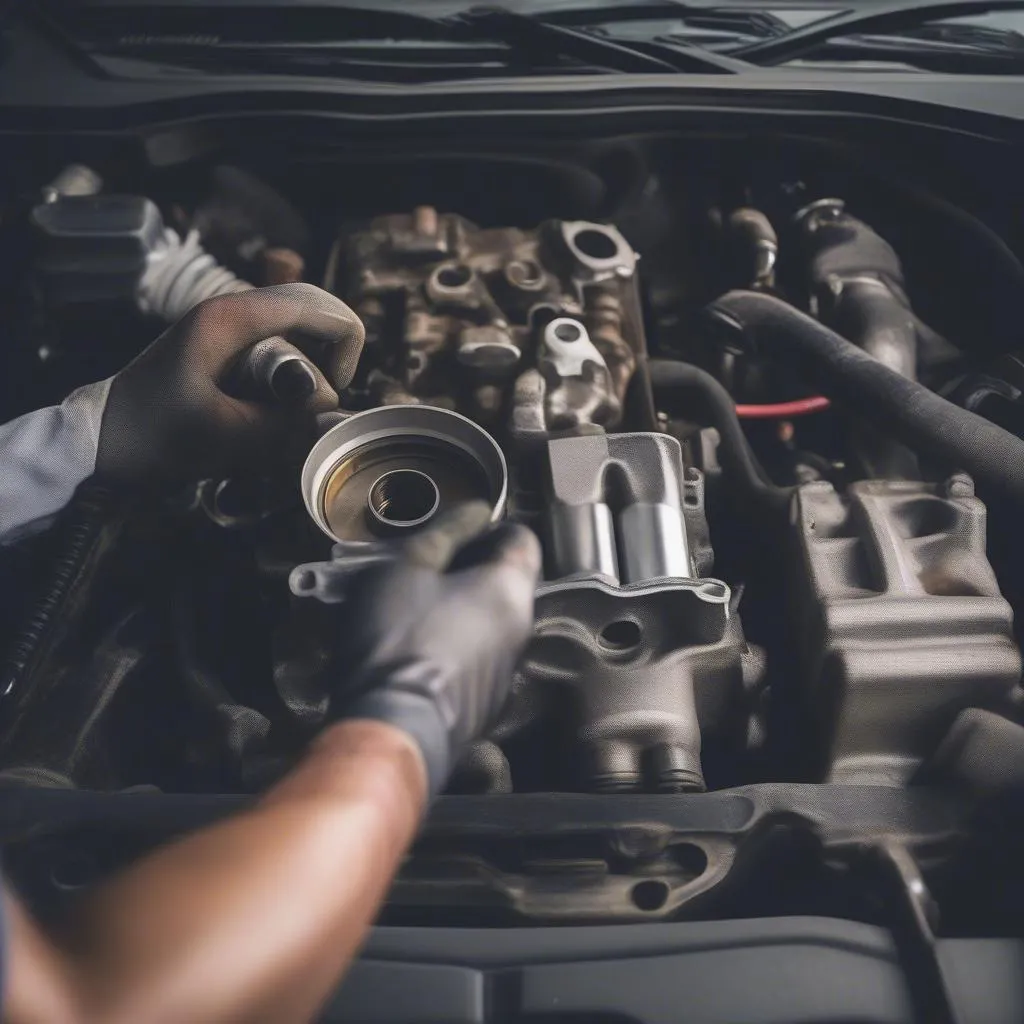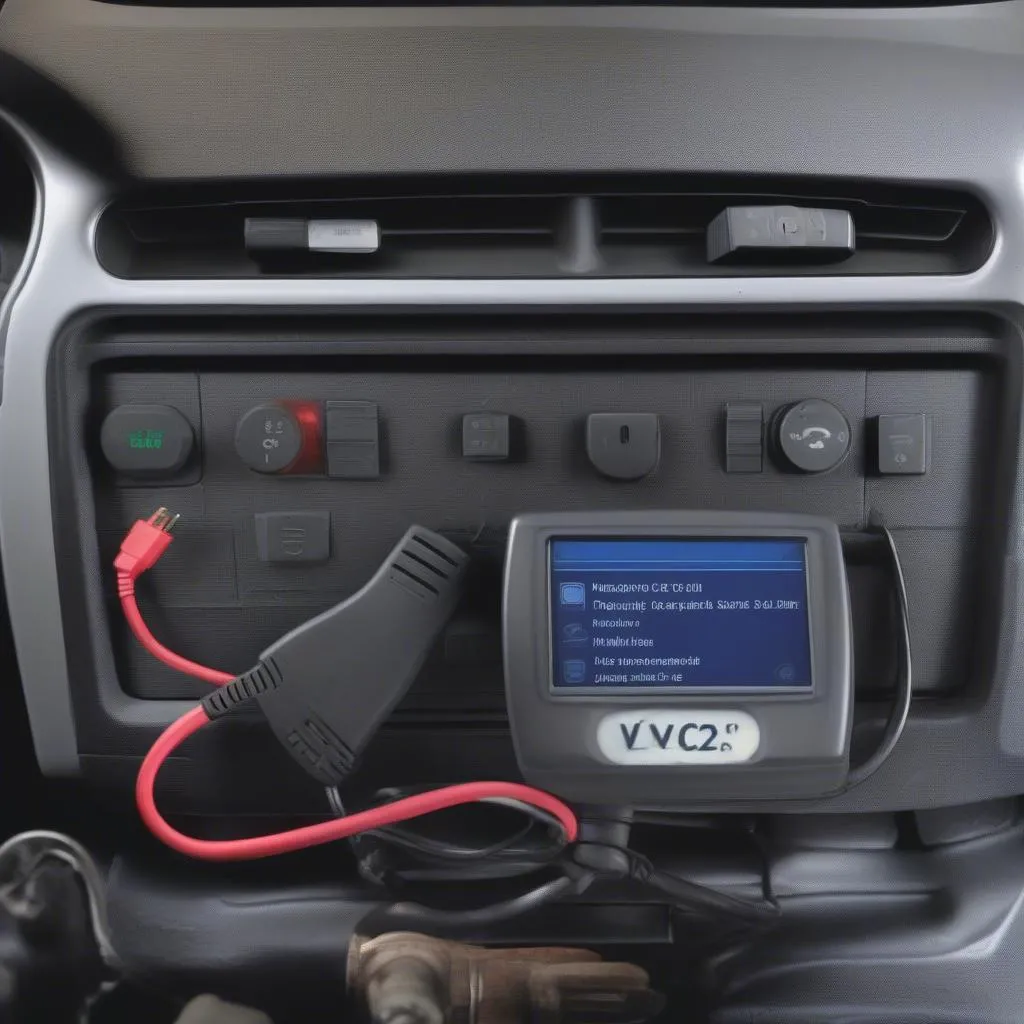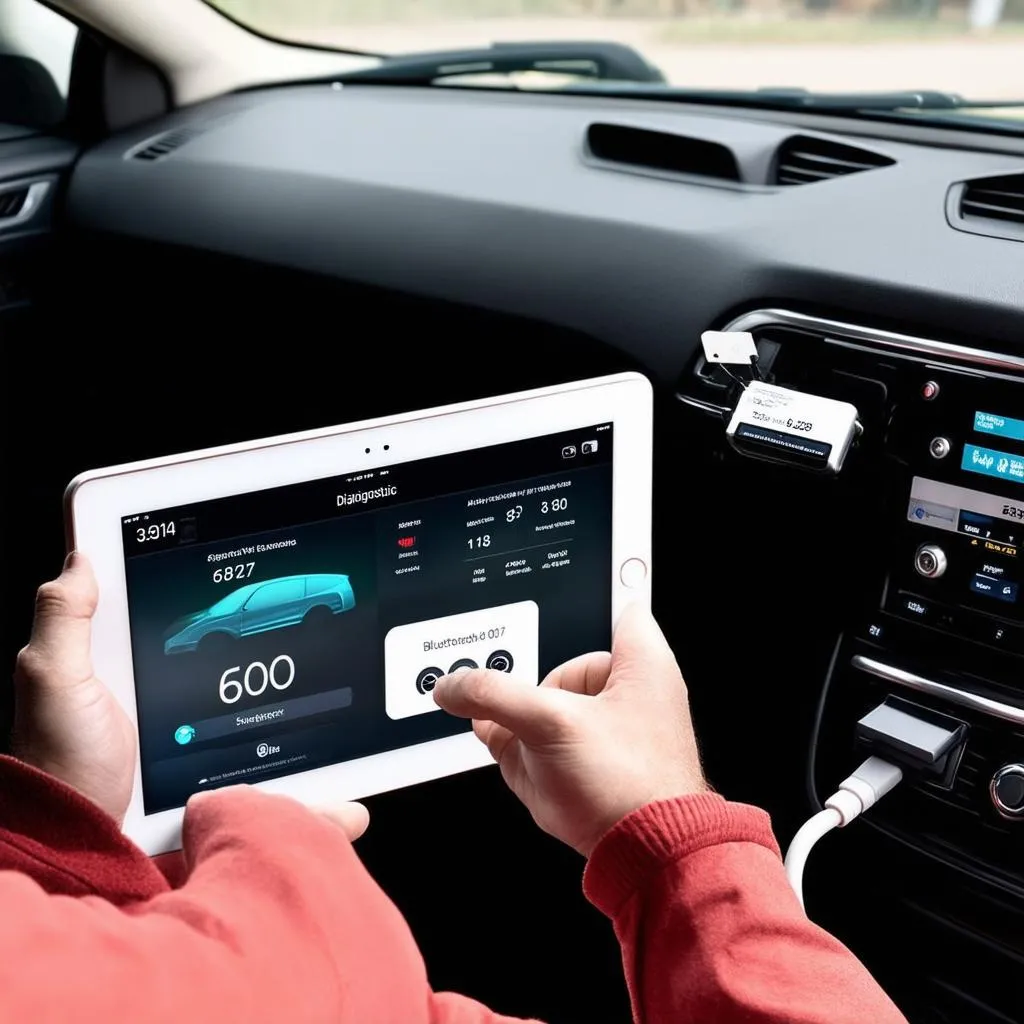Throttle body alignment is a crucial maintenance procedure for vehicles equipped with electronic throttle control (ETC). This process ensures optimal communication between the throttle body and the engine control unit (ECU), resulting in smoother acceleration, improved fuel efficiency, and overall enhanced engine performance. If you’re experiencing rough idling, hesitation during acceleration, or poor fuel economy, a misaligned throttle body might be the culprit. This guide will delve deep into the world of VCDS throttle body alignment, equipping you with the knowledge to understand and potentially rectify these issues.
Understanding VCDS and Throttle Body Alignment
What is VCDS?
VCDS, short for VAG-COM Diagnostic System, is a powerful diagnostic software specifically designed for vehicles from the Volkswagen Audi Group (VAG). It allows users to access, analyze, and modify the various control modules within these vehicles, including the engine control unit responsible for managing the throttle body.
What is Throttle Body Alignment?
Throttle body alignment, also known as throttle body adaptation or relearning, is the process of calibrating the throttle position sensor (TPS) with the ECU. This sensor relays the throttle plate’s position to the ECU, which then adjusts the air-fuel mixture and ignition timing for optimal engine performance.
A renowned automotive engineer, Dr. Emily Carter, in her book “Modern Automotive Electronics,” states, “Accurate throttle position sensing is paramount for modern engine management systems. A properly aligned throttle body ensures precise control over air intake, translating into smoother engine operation and reduced emissions.”
 Throttle Body Alignment
Throttle Body Alignment
When is VCDS Throttle Body Alignment Necessary?
Throttle body alignment is typically required in the following situations:
- Throttle Body Cleaning or Replacement: Disconnecting or cleaning the throttle body can disrupt the learned values stored in the ECU, necessitating a realignment.
- Battery Disconnection: Disconnecting the battery for an extended period can also erase the learned throttle position values, requiring recalibration.
- Symptoms of Misalignment: Rough idling, hesitation during acceleration, poor fuel economy, and an illuminated check engine light can all be indicative of a misaligned throttle body.
Performing VCDS Throttle Body Alignment
Before you begin, ensure you have a genuine VCDS interface and the latest software version installed on your computer.
 VCDS Interface
VCDS Interface
Step 1: Connect and Scan
- Connect the VCDS interface to your vehicle’s OBD-II port and turn the ignition on.
- Launch the VCDS software and establish communication with your vehicle.
Step 2: Access Engine Control Module
- Select “Select Control Module.”
- Choose “Engine” from the list of available modules.
Step 3: Basic Settings
- Go to “Basic Settings.”
- Locate and select the “Throttle Body Alignment” or “Throttle Body Adaptation” function. The specific wording may vary depending on your vehicle model.
Step 4: Follow On-Screen Instructions
- Carefully follow the on-screen prompts provided by the VCDS software. This usually involves turning the ignition on and off, depressing the accelerator pedal, and waiting for confirmation from the software.
Step 5: Verify Alignment
- Once the procedure is complete, clear any fault codes that may be present.
- Take your vehicle for a test drive to verify if the alignment was successful. You should notice smoother idling, improved throttle response, and overall better engine performance.
FAQs about VCDS Throttle Body Alignment
Q: Can I perform throttle body alignment without VCDS?
A: While some vehicles might have a self-adaptation procedure, using VCDS offers more control and precision, especially for VAG vehicles.
Q: How often should I perform throttle body alignment?
A: It’s generally recommended to perform alignment after any throttle body-related work or if you experience symptoms of misalignment.
Q: What happens if I don’t align my throttle body?
A: Driving with a misaligned throttle body can lead to reduced fuel efficiency, rough idling, and potentially even damage to other engine components in the long run.

